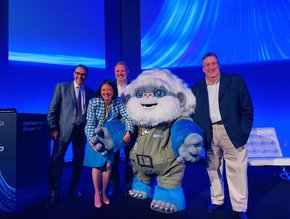Alphabet X’s high-speed light beam internet

The method of delivering internet access has successfully transmitted data across the Congo River, which means people living in Brazzaville and Kinshasa could get faster and cheaper broadband.
Project Taara is one of Alphabet X's (formerly Google X) so-called ‘moonshot’ ideas, evolving from Project Loon. This is a now defunct broadband project based on using balloons in the stratosphere.
The latest experiment means that a "particularly stubborn connectivity gap" between the two African cities - Brazzaville in the Republic of the Congo and Kinshasa in the Democratic Republic of Congo - has been filled, according to Project Taara’s team blog. The two cities lie only three miles apart, but connecting them is difficult because traditional cable has to be routed around the river, making broadband prices five times more expensive.
Taara to play a key role in fast, more affordable connectivity
Alphabet X reported that the wireless optical communications (WOC) system provided nearly 700 terabytes of data in 20 days with 99.9% availability.
The blog went on: "While we don't expect to see perfect reliability in all kinds of weather and conditions in future, we're confident Taara's links will continue to deliver similar performance and will play a key role in bringing fast, more affordable connectivity to the 17 million people living in these cities."
This development is the latest iteration of the project, which has been in development for the last three years. X is working with Econet Group and Liquid Telecom to bring high-speed internet to sub-Saharan Africa and has begun a commercial rollout in Kenya.
Free Space Optical Communications
The system uses very narrow, invisible beams of light to deliver high speeds, similar to the way traditional fibre in the ground uses light to carry data but without the cable casing. Known as Free Space Optical Communications, it grew out of experiments the team had previously used to beam lasers between balloons in Project Loon, consequently stopped because of lack of commercial viability.
However the team admits it will not offer full reliability in challenging conditions, such as fog, haze or when birds fly in front of the signal. However, it has been improved by adjusting the level of laser power being transmitted, The technology has also been trialed in Kenya, India, the US and Mexico.
- OpenText CEO Roundtable: The Future of Safe Enterprise AIDigital Transformation
- OpenText AI: Empowering Businesses in Information ManagementDigital Transformation
- Microsoft in Japan: $2.9bn Investment to Boost AI & CloudCloud & Cybersecurity
- Google Cloud Next 2024: Pushing the Next Frontier of AIAI & Machine Learning






